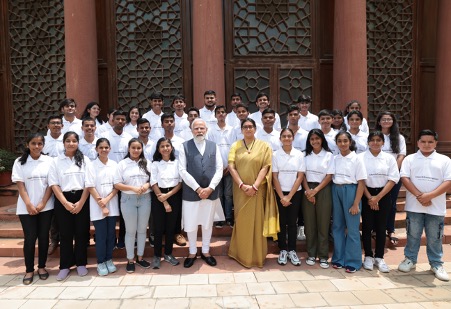The Rise of a New Generation in Uttar Pradesh’s Politics
Uttar Pradesh (UP), with its massive youth population, has become a breeding ground for political ambitions. Youth leaders are increasingly stepping into the spotlight, promising to bring fresh perspectives and challenge the status quo. But are these leaders truly revolutionizing UP’s political landscape, or are they merely adapting to the traditional power dynamics to secure their place in the game?
Key Metrics
- Youth Demographics: Nearly 32% of UP’s population falls within the 15–34 age group. (Census 2011)
- Youth Unemployment: The unemployment rate among UP’s youth is approximately 13.3%, higher than the national average. (Periodic Labour Force Survey, 2022–23)
- Representation: Only 7% of the current legislative assembly is under the age of 40, despite youth forming a significant part of the electorate. (Election Commission of India)
Emergence of Youth Leaders
1. Prominent Faces
Youth leaders like Akhilesh Yadav (Samajwadi Party) and Aditi Singh (formerly Congress, now BJP) symbolize a shift toward generational change.
- Akhilesh Yadav: Representing the new-age face of the SP, Yadav has successfully blended his rural roots with modern narratives of development and digital governance.
- Aditi Singh: As a young female politician, Singh has emphasized women’s empowerment and grassroots issues, showcasing a break from traditional, patriarchal leadership norms.
2. Grassroots Mobilization
Rising leaders from smaller parties and independent movements are challenging entrenched political hierarchies. For instance:
- Youth wings of the SP, BJP, and Congress are increasingly active, leveraging social media and community engagement to connect with first-time voters.
Are They Changing the Game?
1. Issue-Based Politics
Youth leaders are highlighting issues such as unemployment, education, and gender equity, which resonate with younger voters.
- Skill Development and Jobs: Campaigns often emphasize programs like UP Skill Development Mission to tackle youth unemployment.
- Digital Connectivity: Advocacy for improved internet access in rural areas to bridge the digital divide.
2. Innovative Campaigning
The adoption of social media platforms like Twitter, Instagram, and Facebook has transformed the way youth leaders engage with their constituencies. Live sessions, hashtags, and digital campaigns bring a sense of immediacy and relatability.
3. Focus on Inclusivity
Some youth leaders are striving to represent marginalized communities, including Dalits, women, and minorities, bringing inclusivity into their political platforms.
Or Just Playing Along?
1. Dynastic Politics
Despite a growing youth presence, many leaders are scions of established political families, perpetuating a cycle of dynastic politics.
- Example: Akhilesh Yadav’s rise, while impactful, is rooted in the legacy of Mulayam Singh Yadav.
- Challenge: Critics argue that these leaders inherit influence rather than earn it through grassroots work.
2. Lack of Policy Shifts
While youth leaders raise pertinent issues, they often align with party lines, limiting their ability to drive transformative change.
- Party Allegiances: Strong party hierarchies restrict independent decision-making, forcing youth leaders to conform to traditional agendas.
3. Polarization and Populism
Some youth leaders resort to identity politics or populist rhetoric, echoing the tactics of older political leaders. This undermines the potential for progressive, issue-based governance.
Challenges for Youth Leadership in UP
- Economic Realities
- High unemployment and lack of job creation often overshadow campaign promises, creating skepticism among young voters.
- Cultural and Structural Barriers
- Entrenched caste and gender biases in UP’s political landscape hinder diverse representation among young leaders.
- Token Representation
- Youth leaders are often used as figureheads in campaigns but lack real decision-making power within their parties.
The Way Forward
- Independent Platforms for Youth
- Encourage platforms that allow young leaders to independently voice their concerns without being overshadowed by party hierarchies.
- Policy-Driven Campaigns
- Shift the focus from identity politics to actionable policies addressing unemployment, education, and digital infrastructure.
- Promoting Grassroots Leadership
- Support emerging leaders from non-dynastic backgrounds who connect authentically with their constituencies.
- Digital Governance Initiatives
- Leverage technology to create transparent, participatory governance models that resonate with younger demographics.
Conclusion
Youth leaders in Uttar Pradesh represent a vital force in shaping the state’s political future. While some have brought innovation and issue-based approaches to the forefront, many still operate within the constraints of traditional party systems. For real change to take root, these leaders must move beyond dynastic politics and populist narratives to deliver meaningful governance and policy reforms.
The question remains: Will the state’s young politicians harness their potential to transform UP’s political landscape, or will they continue to play by the old rules, missing the chance to redefine leadership for the next generation? The answer may determine not only UP’s trajectory but also its influence on India’s broader political future.


Leave a Reply